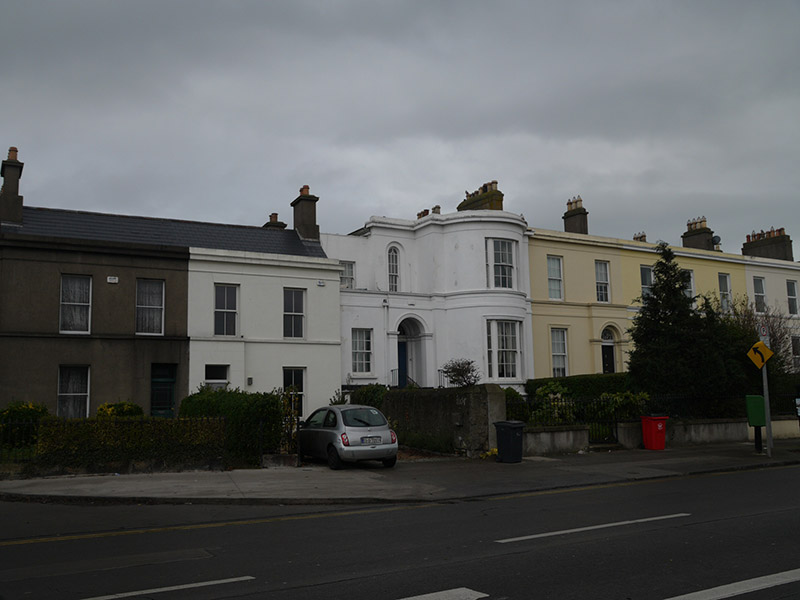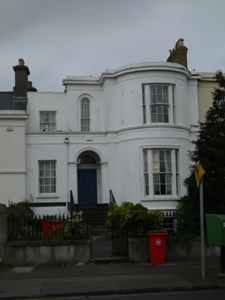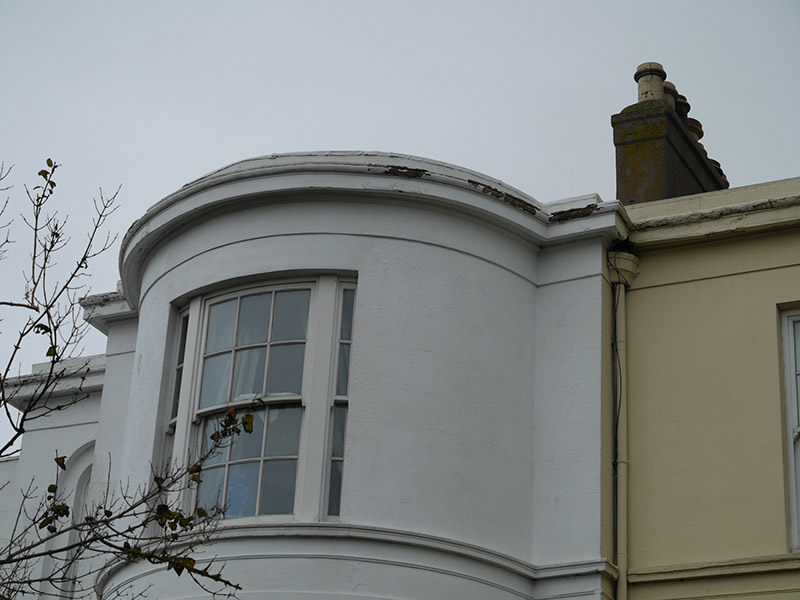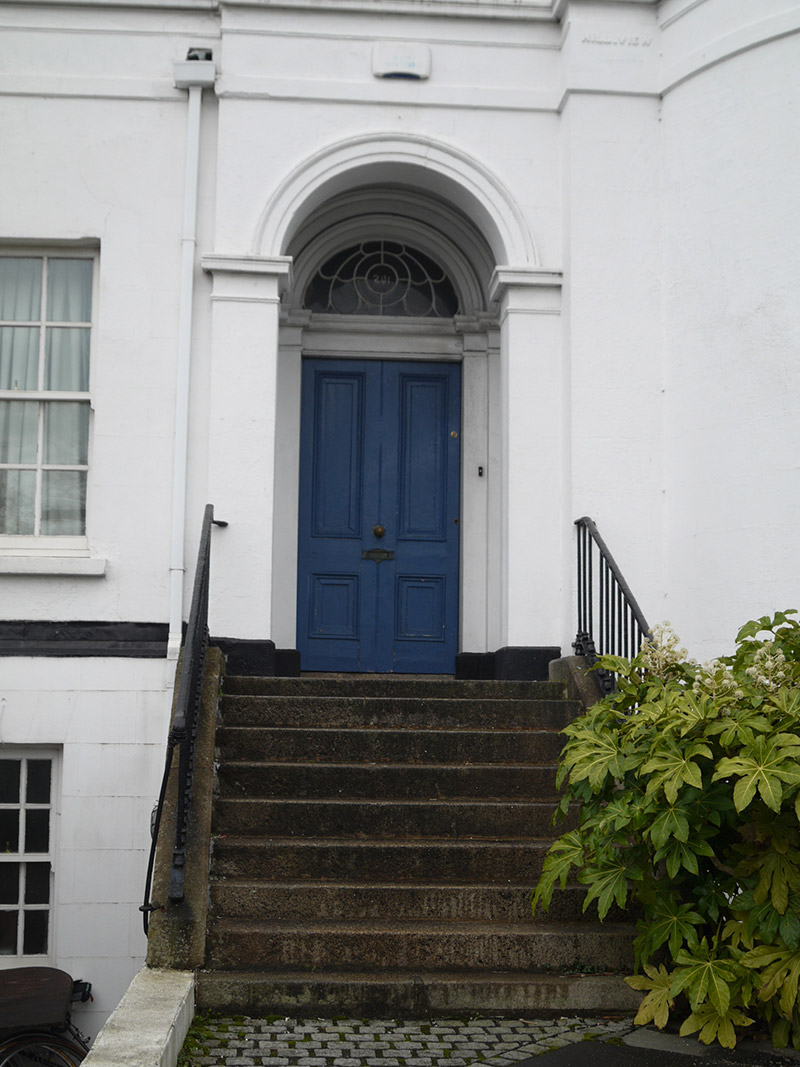Survey Data
Reg No
50030127
Rating
Regional
Categories of Special Interest
Architectural, Artistic
Previous Name
Hillview Terrace
Original Use
House
In Use As
House
Date
1845 - 1850
Coordinates
320200, 235797
Date Recorded
04/12/2014
Date Updated
--/--/--
Description
End-of-terrace two-bay two-storey house over raised basement, built 1846, having bowed bay at east end of front, recessed entrance bay to middle, and slightly lower single-bay two-storey bay over basement slightly recessed to west. Hipped roof hidden behind rendered parapet, with cornice to front elevation, smooth rendered chimneystacks with clay chimneypots, and some cast-iron rainwater goods. Lined-and-ruled rendered walls with render stringcourses and having render band to eaves. Square-headed window openings, tripartite and margined to bowed bay, with six-over-six pane timber sliding sash windows throughout front elevation. Moulded surround to ground floor window of bowed bay. Round-headed window opening to first floor of entrance bay set within recess. Continuous moulded render sill course to first floor and masonry sills to ground floor. Round-headed door opening having moulded surround and pilasters with imposts, deeply recessed timber panelled door with tear-drop fanlight within moulded surround. Cut granite entrance steps and platform having cast-iron railings. Set back from road and having smooth rendered plinth walls with cut granite capping and cast-iron railings and cast-iron pedestrian gate.
Appraisal
The very distinctive form of this house makes a strong impression on the streetscape. The bowed bay front, raised entrance and mouldings add visual interest. Decorative historic fabric remains in the fanlight and cast-iron railings. The house was built by Joseph Mannin, on land leased from J.E.V. Vernon, as the west end of a symmetrical terrace of five houses. It therefore shares proportions and details with its neighbours, resulting in a pleasing composition that can be appreciated due to its siting on the expansive seafront. The front garden boundary remains intact contributing to the early suburban character of Clontarf Road. This terrace is among the earlier surviving developments on the seafront that known as designated Clontarf Road after 1912. It appears to have replaced earlier buildings and the area was known as the Clontarf Sheds due its longstanding use for drying sheds for the fishing industry. A large number of new suburban houses were constructed from the nineteenth century onward in order to accommodate Clontarf's popularity as a middle class suburb.







